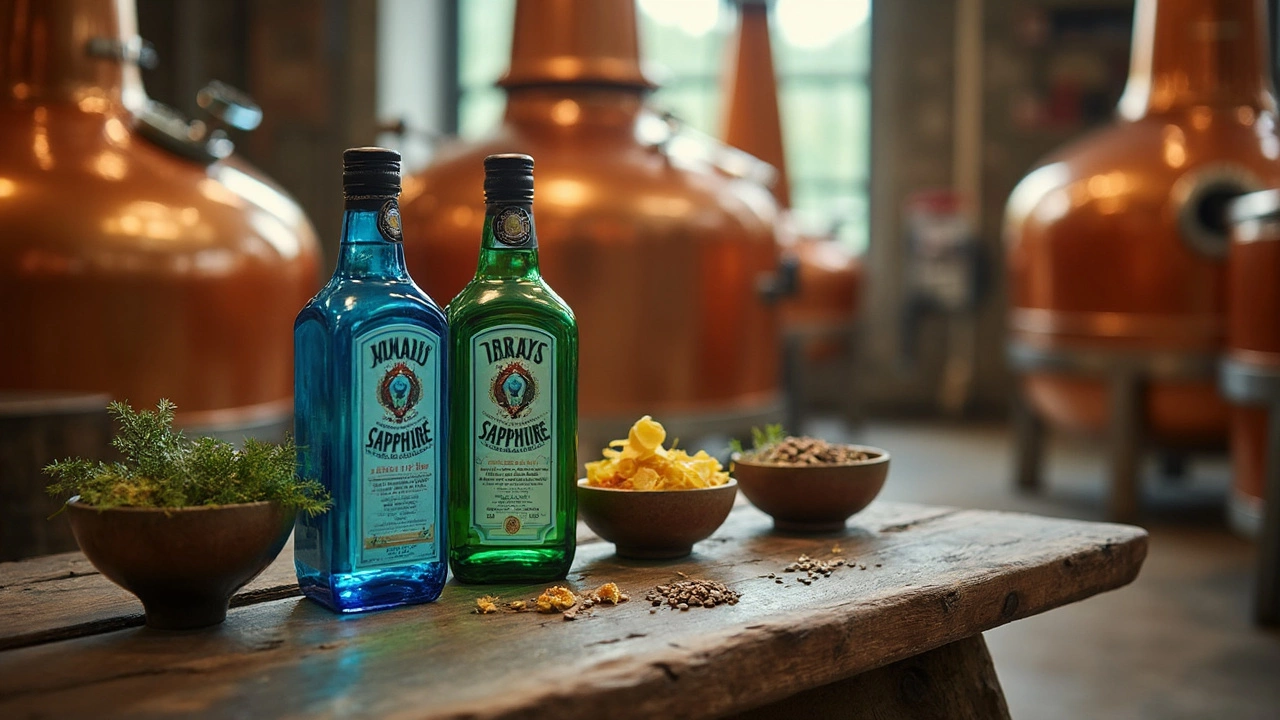Gin Differences: How to Spot, Taste and Choose the Right Gin
If you’ve ever stared at a shelf of gin bottles and felt lost, you’re not alone. Gin isn’t just one drink – it’s a family of spirits, each built on its own mix of botanicals, region and style. Knowing the key differences helps you pick a gin that fits the cocktail you want or the neat sip you crave.
Botanicals and Flavors
The biggest driver behind gin differences is the botanical blend. Juniper is the law‑mandated base, but everything else – coriander, citrus peel, cucumber, lavender, even pepper – changes the flavor map. A London Dry like Beefeater sticks close to classic juniper, citrus and spice, giving a crisp, clean bite. A contemporary gin such as Hendrick’s adds cucumber and rose, which softens the edge and makes it feel more floral.
Bombay Sapphire takes a different route with ten botanicals, including almond and lemongrass. That mix creates a bright, slightly sweet profile that works well in a simple gin & tonic. If you prefer a richer, malt‑forward gin, look to Old Tom or barrel‑aged versions that carry vanilla, caramel and oak notes. These variations are great for sipping straight or in a Old‑Fashioned‑style cocktail.
Production Methods and Origins
How a gin is made also matters. Most gins are made by redistilling a neutral grain spirit with botanicals, either by steeping (infusion) or vapor‑infusing the herbs. Vodka‑style gins usually use a neutral base and a short infusion, keeping the flavor light. Craft distilleries often use pot stills and batch‑wise botanical addition, resulting in deeper, more complex aromas.
Geography adds its own signature. Dutch “Jenever” uses malt wine and gives a slightly sweet, grainy edge, while Spanish “Ginebra” often features local herbs like rosemary. Knowing the region can clue you in on the expected taste before you even try the gin.
Price, Brand & When to Use
Price isn’t a perfect indicator of quality, but it often reflects production scale and ingredient sourcing. A $20 London Dry will usually be clean and reliable for mixed drinks. Premium bottles around $40‑$60—like Hendrick’s or an artisanal gin from Scotland—offer unique botanicals that shine when served neat or with minimal mixers.
Pick a gin based on the cocktail you plan to make. For a classic gin martini, a dry, juniper‑forward gin works best. For a gin fizz, a citrus‑heavy gin adds brightness. For a gin & tonic, try a gin with a subtle spice or floral note to complement the tonic’s bitterness.When you’re unsure, start with a small tasting flight. Sip each gin neat, note the first impression, the mid‑palate and the finish. You’ll quickly learn whether you prefer clean, spicy, sweet or herbaceous styles.
Bottom line: gin differences come down to botanicals, production methods and price tiers. By focusing on what flavors you like and how you’ll drink the gin, you can cut through the shelf confusion and enjoy a spirit that matches your taste. Happy sipping!
Ever wondered what makes Bombay Sapphire different from other Bombay gins? This article breaks down the real differences between Bombay Sapphire and its traditional counterpart. From how they’re made to their flavors and the best ways to taste them, you’ll get all the details you need for your next distillery trip or gin purchase. Learn some cool facts and tips along the way. If you’re thinking of trying these gins or planning a visit, here’s what you’ll want to know.
View Details

